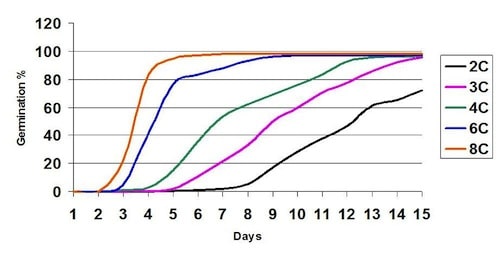
Slow canola emergence due to cool soils can increase the risks from seedling diseases and from flea beetles.
Seedling disease risk. Slow plant development increases the risk from seedling diseases. Fungicide seed treatments start to lose their effectiveness after a few weeks. The week after seeding is a good time to dig up seeds and seedlings to check for rots and blights. Disease damaged seed and seedlings die quickly, and may be gone within a few days, which is why this timing is important to an accurate diagnosis.
Flea beetle risk. In slow germinating or slow growing crops, seed treatments may lose their effectiveness before the plants are large enough to tolerate much feeding.
Further reading:
How to make the flea beetle spray decision.
Seedling disease in deep-seeded canola.
Slow emergence adds to seedling disease risk.
Canola Encyclopedia chapter on seedling diseases.